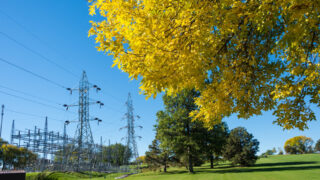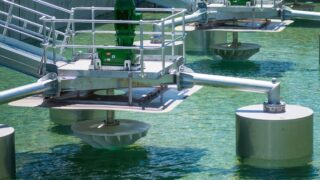The Importance of Wastewater Treatment Plant Design
Not many are aware of the sheer number of harmful debris, microorganisms, and chemicals found in wastewater. Wastewater can be defined as any water that has been used in households or industries, and it includes sewage, dirty rainwater, and stormwater runoff. It’s important to properly design wastewater treatment plants because, without them, these contaminants could potentially enter our waterways and pollute them.
In this blog post, we’ll be discussing the importance of wastewater treatment plant design, how wastewater treatment plants are designed, and the future of wastewater treatment.
What Does Wastewater Treatment Plant Design Entail?
Wastewater is a general term used to describe water that has been contaminated by human activity. This can include sewage, stormwater runoff, and even dirty rainwater which is a mixture of chemicals, dissolved or suspended solids, bacteria, and other microorganisms. Overall, wastewater is polluted water that needs to go through a treatment process before it is released back into the environment.
Proper wastewater treatment equipment and design are essential to ensure that the water is clean enough to be safely released back into the environment. There are many different types of wastewater treatment plants, each with its unique design. These plants use a variety of treatment equipment that include tanks, filters, and screens which all can be bought commercially with sub-surface or above-ground systems.
The wastewater treatment plant design is crafted with three distinct stages.
- The primary stage includes screening, grit removal and sedimentation processes.
- In the secondary phase comes a bioreactor for further purification
- Tertiary treatment consists of nitrogen removal, adsorption and pH control.
Learn More: A Comprehensive Review of a Wastewater Treatment Plant Equipment List
How Is a Wastewater Treatment Plant Designed?
Following these simple steps will help simplify the design process of a wastewater treatment plant:
Grasp The Local Environment
Understanding the local environment is crucial when designing a wastewater treatment plant. The climate, geography, and geology of the area must be taken into consideration to create a plant that is effective and efficient.
Analyze The Wastewater
After the local environment has been taken into account, the next step is to analyze the wastewater itself. This includes testing the water for various contaminants, such as bacteria, viruses, fungi, and other microorganisms. Once these contaminants have been identified, the proper treatment processes can be designed.
Design The Treatment Process
The third step is to design the treatment process itself. This includes choosing the right type of equipment and layout for the plant. It’s important to consider the size of the plant, as well as the type of wastewater that will be treated.
Build The Wastewater Treatment Plant
The fourth and final step is to build the wastewater treatment plant. This includes putting all of the equipment and processes in place, as well as testing the plant to ensure that it is effective.
Designing a wastewater treatment plant is a complex process, but it is essential to protecting our environment. By following these simple steps, you can ensure that your plant is effective and efficient.
The Process of Wastewater Treatment Design
Now we understand how important wastewater treatment plant design is, let’s take a look at the process of designing one.
Selecting Appropriate Processes
The first step is to select the appropriate processes for treating the wastewater. This includes choosing the right type of equipment and chemicals for each process.
It’s important to consider the type of wastewater that will be treated, as well as the desired outcome.
Design of the Layout
The next step is to design the layout of the plant. This includes choosing the right type of structures to house the equipment and the placement on site for each process. It’s important to consider the overall size of the plant, as well as the type of wastewater that will be treated.
Here is a brief overview of what a typical wastewater treatment plant looks like:
Screening Chamber
This is the first step in the wastewater treatment process. The chamber removes large objects, such as sticks and stones, from the water. It is also divided into phases. The first phase may havean opening of 20-30 mm while the second phase may have anopening of 1.5 mm to 6.4mm.
Primary Sedimentation Tank
The primary sedimentation tank is the second step in the wastewater treatment process. The tank removes suspended organic and inorganic solids from the water under continuous flow conditions.
Sand Bed Bioreactor
Next is the sand bed bioreactor which uses sand to remove pollutants from the wastewater.
Nitrogen and Phosphorus Removal
At this stage, nitrogen is most commonly removed through a process called a Step Feed Anoxic Aerobic Process. This can be followed by phosphorus removal which is often done through a process done in the anoxic zone.
Sludge Digestion
The sludge digestion process breaks down the highly concentrated organic matter by bacteria in anaerobic or aerobic conditions. Once this is done, the sludge is then moved to the next tank.
pH Control Unit
The pH control unit is the final step in the wastewater treatment process. It adjusts the pH of the water to make it safe for discharge. The goal of this unit is to maintain a pH of 6.5. Once it is detected to be outside of this range, the controller will transmit this information and may shut off the exit stream.
Controlling & Mitigating Odors
Odors can be a big problem for wastewater treatment plants. There are a few different ways to control and mitigate odors.
Biological Scrubbers: These use microorganisms to break down the odorous compounds in the air. This process has the benefit of not using any chemicals, being effective in removing a wide range of odors, and being relatively low-maintenance.
Chemical Scrubbers: Chemical Scrubbers use chemicals such as sodium hydroxide and sodium hypochlorite or other oxidants to remove odorous compounds from the air.
Confining, Capturing, & Transporting Odors to Scrubbers:
This method can be done by covering the wastewater treatment areas that are producing an odor, withdrawing the scents with the help of fans, and sending it to the scrubbers underground.
Build a 3D Model of the Wastewater Treatment Plant
Once you have a process, equipment, and civil design, it’s important to build a three-dimensional (L x W x H) model of the wastewater treatment plant. You can build this digitally with tools like Revit, or even choose to display a table-sized 3D model where each element is displayed in its proper location.
This will help you visualize the final product and ensure all the components fit together correctly. It also allows you to see how the plant will operate and identify potential problems.
By taking this necessary step, once you have identified any problem areas, you can make the required modifications to the design before construction begins. This will save you time and money in the long run.
With the Transcend Design Generator, you can quickly and easily create a three-dimensional Building Information Model (BIM) model of your wastewater treatment plan developed from calculations of different water & wastewater treatment engineering fields. Our user-friendly, engineering quality software automatically completes a process simulation, selects the proper equipment, and decides how each element is structured.
The Design Generator will save you countless hours in the design process and help you create a more efficient wastewater treatment plant.
Taking Neighborhood Compatibility Into Consideration
When designing a wastewater treatment plant, it’s necessary to consider the surrounding neighborhood. There are a few things to keep in mind:
Landscaping & Area Lighting
For the lighting, it’s important to choose fixtures that emit a soft light and are pointed downwards. This will minimize the number of glaring lights that are shone into nearby homes.
As for landscaping, it’s important to choose plants that are native to the area and require minimal maintenance. This will reduce the amount of noise and vibrations from equipment. Bonus points if aesthetically pleasing landscaping is used to make the wastewater treatment plant more inviting to the community.
Noise Cancellation
Choose equipment that produces minimal noise and vibrations. If possible, it’s a good idea to use sound-absorbing materials to minimize the noise that is emitted from the wastewater treatment plant.
The Future of Wastewater Treatment
As technology advances, so does the wastewater treatment industry. There are always new and improved ways to treat wastewater. By staying up-to-date on the latest technology, you can ensure that your treatment plant is operating at its fullest potential.
How Transcend Can Help
Wastewater treatment plant design is a critical process that should not be taken lightly. There are many factors to consider, such as the type of wastewater, the desired outcome, and the surrounding neighborhood. By taking the time to design a well-thought-out treatment plant, you can save yourself time and money in the long run.
Transcend offers a variety of tools that can help you with the wastewater treatment plant design process and staying up to date with the latest innovations in wastewater treatment. Our tools can easily help you choose the right equipment, build a three-dimensional model of the plant, and consider the surrounding neighborhood. To learn more about our services, contact us today. We’d be happy to help you with all your wastewater treatment needs.







